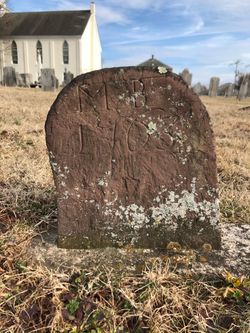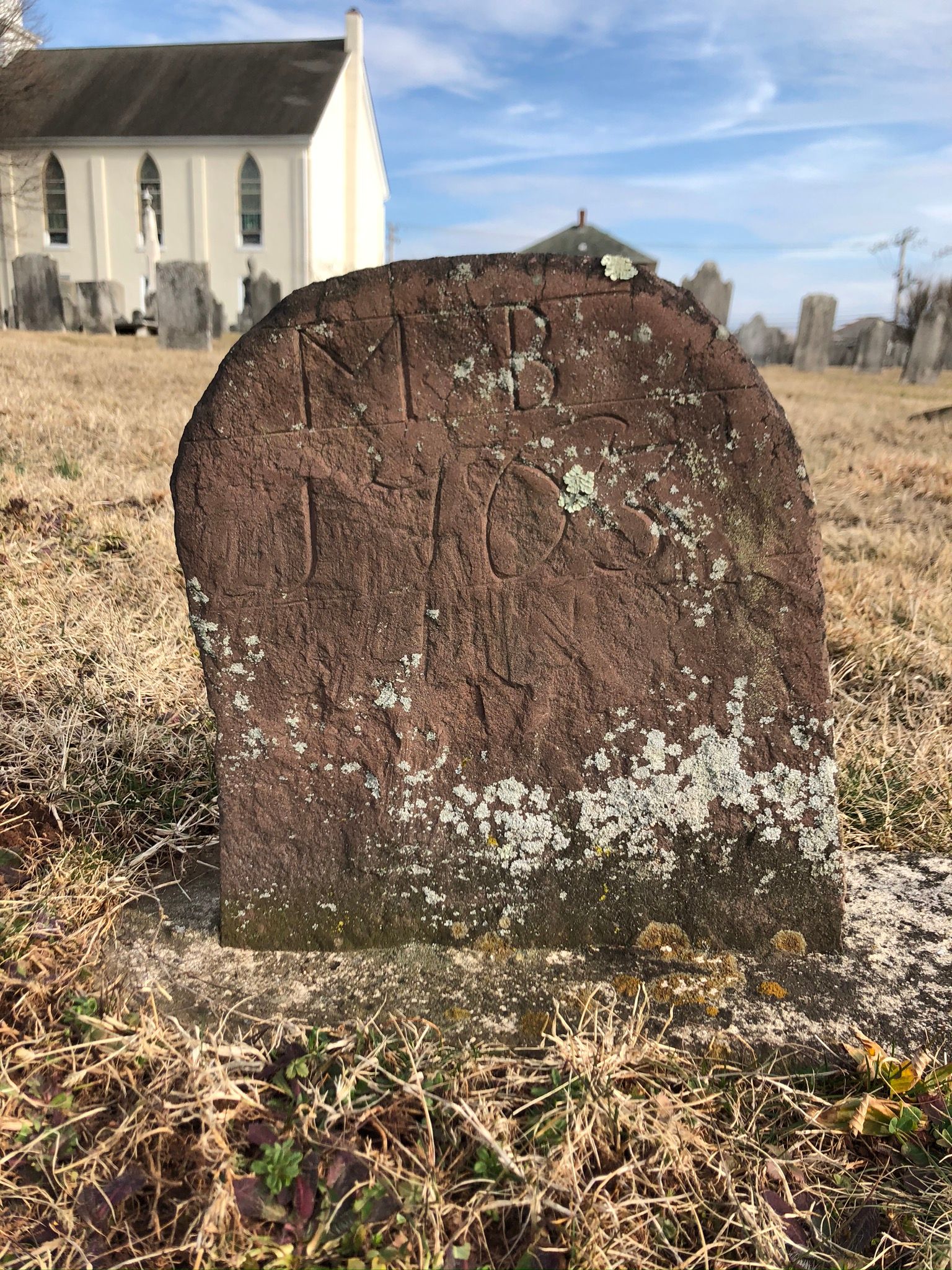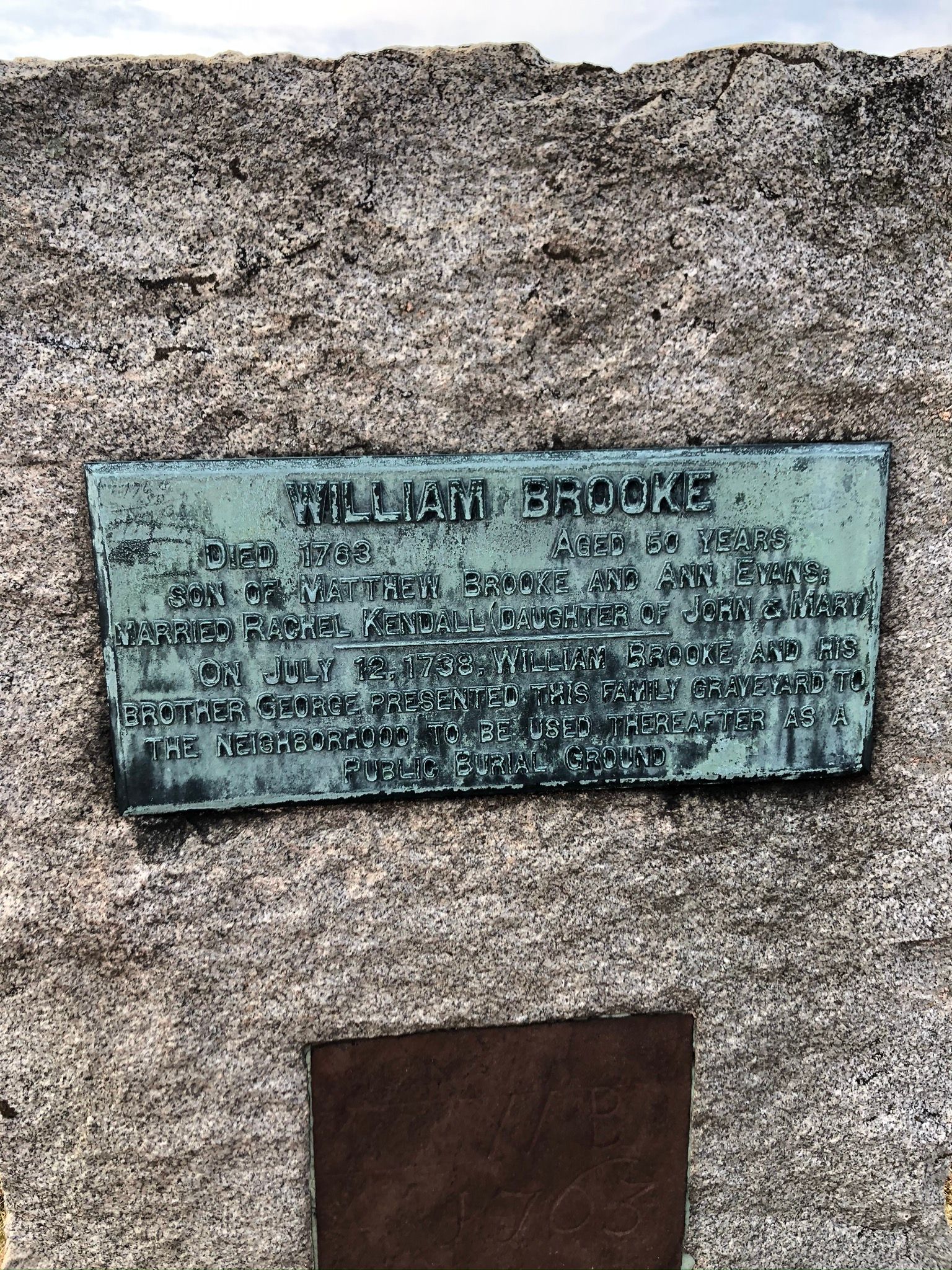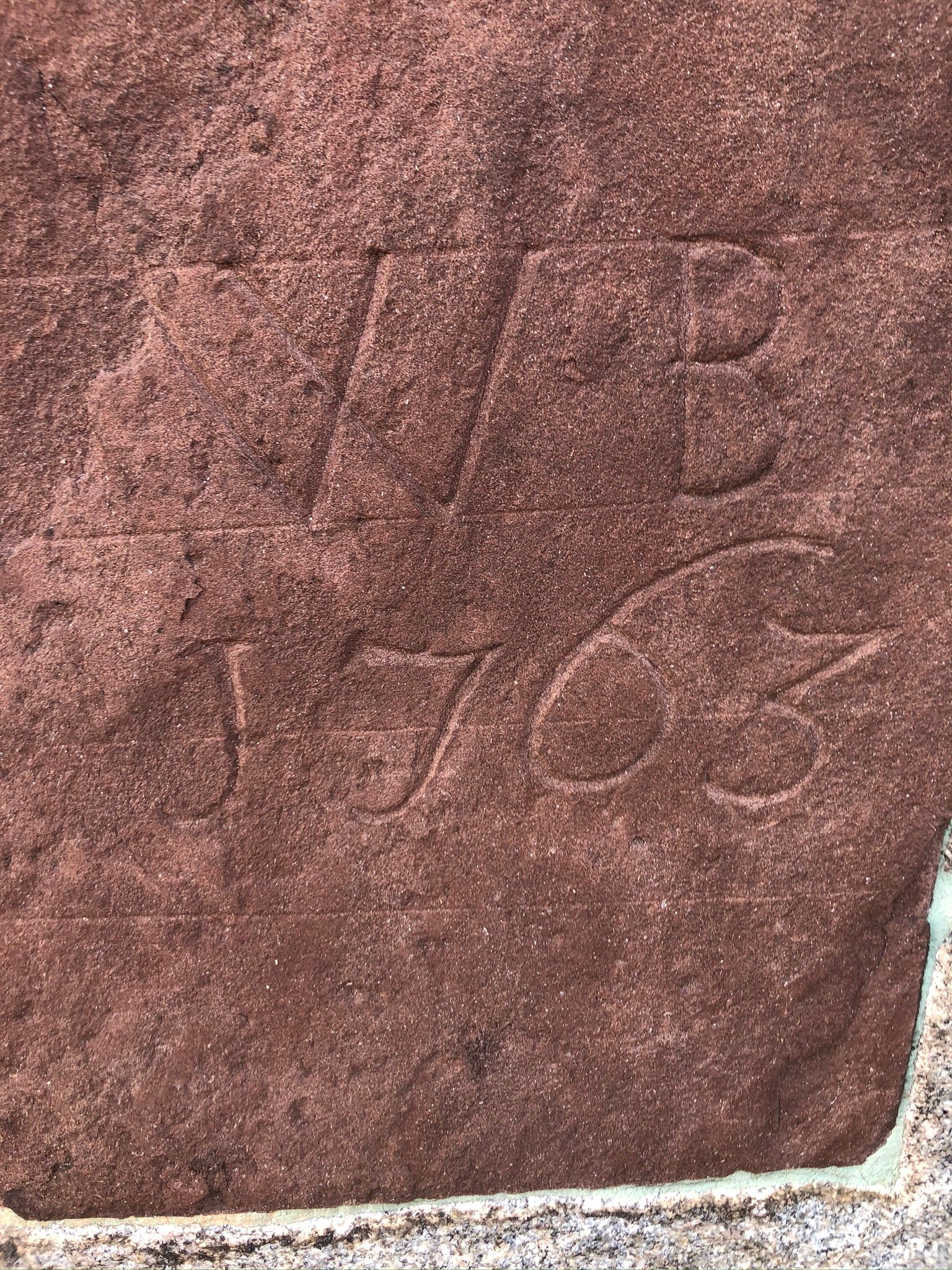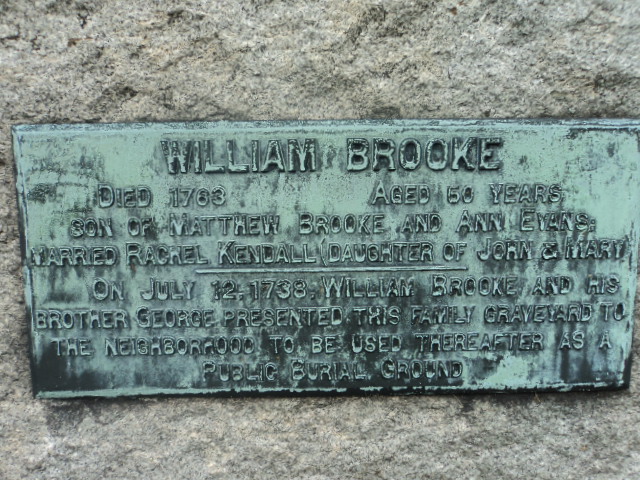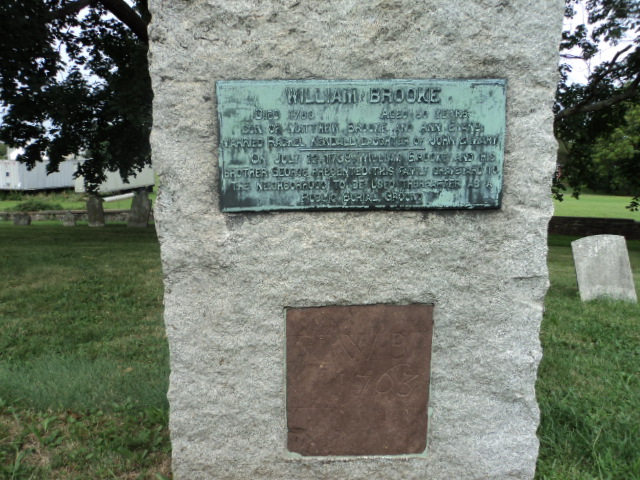Chapter 6
WILLIAM BROOKE OF LIMERICK (1713-1763)
William (Matthew, John, Humphrey, Humphrey, Roger, Roger, John, Roger) Brooke was born in 1713 in Limerick Township. The eldest of four sons, he was only seven years old when his father died. Within the next year or so, his mother married Joseph Barlow by whom she had seven children. He was about 25 years old when he married Rachel Kendall, one of the five daughters of his neighbors John and Mary Kendall....Rachel grew up on her father's 300-acre farm which was situated near and on the same side of Manatawny Road as the farm owned by William's father (Matthew)....John Kendall had been an appraiser of the estates of William's father in 1720....Rachel would inherit 5 pounds from her father in 1744/5 and 48 pounds, a feather bed, bedstead, bolster, and pillows, and three blankets and a coverlet from her mother in 1769....Some time before 1720, William Brooke's father and uncle, Matthew and James Brooke, had set aside a piece of their ground 18 rods square (slightly over two acres) for a community burial ground [Limerick Church Burial Ground]....On 12 July 1738, William Brooke and his brother George executed a title in trust to 23 grantees for the cemetery....About the year 1807, steps were taken to secure the erection of a church there....Many members of the Brooke and Evans families joined that Lutheran Church. Because most of the Lutheran ministers at that time preached in German only, special arrangements for services in English were necessary....Besides the home place, William Brooke owned a 100-acre tract of land in Hanover Township that contained a stone house, a young orchard, and two mills, one a Grist Mill and the other a Saw Mill. He sold this tract in March 1761. William died intestate....Letters of administration on William's estate were issued to his widow (Rachel), eldest son John Brooke, brother Matthew Brooke of "Harford" (Haverford), Chester County, and Benjamin Davis of the City of Philadelphia on 24 October 1763. William was a wealthy man. The total appraised value of his "goods and chattles" according to an inventory taken by Matthew Brooke and David Evans on 12 October 1763, was 993 pounds. Money due "for the mill" from Andrew Ortlep accounted for more than one-half of this total. Two slaves, "a Negro man Named Seacer" and "a Negro woman Named Quatto," were valued at 90 pounds and 70 pounds respectively. The time remaining on the indentures of two servants, a girl and a boy, totaled 15 pounds. His wearing apparel and a silver watch were valued at 20 pounds, his riding horse and saddle at 15 pounds, other horses, cattle, and sheep at 60.16 pounds, and wheat, rye, oats, hay, and corn at 64 pounds. Several of the more interesting of the many other items listed are two guns and a rifle at 7.05 pounds, a clock and case at 8 pounds, a dictionary at .12 pound, amount due from Overseer of the Poor of "Limbrick" 1.05 pound, and a year's rent from George Morsteler 10 Pounds.
Chapter 6
WILLIAM BROOKE OF LIMERICK (1713-1763)
William (Matthew, John, Humphrey, Humphrey, Roger, Roger, John, Roger) Brooke was born in 1713 in Limerick Township. The eldest of four sons, he was only seven years old when his father died. Within the next year or so, his mother married Joseph Barlow by whom she had seven children. He was about 25 years old when he married Rachel Kendall, one of the five daughters of his neighbors John and Mary Kendall....Rachel grew up on her father's 300-acre farm which was situated near and on the same side of Manatawny Road as the farm owned by William's father (Matthew)....John Kendall had been an appraiser of the estates of William's father in 1720....Rachel would inherit 5 pounds from her father in 1744/5 and 48 pounds, a feather bed, bedstead, bolster, and pillows, and three blankets and a coverlet from her mother in 1769....Some time before 1720, William Brooke's father and uncle, Matthew and James Brooke, had set aside a piece of their ground 18 rods square (slightly over two acres) for a community burial ground [Limerick Church Burial Ground]....On 12 July 1738, William Brooke and his brother George executed a title in trust to 23 grantees for the cemetery....About the year 1807, steps were taken to secure the erection of a church there....Many members of the Brooke and Evans families joined that Lutheran Church. Because most of the Lutheran ministers at that time preached in German only, special arrangements for services in English were necessary....Besides the home place, William Brooke owned a 100-acre tract of land in Hanover Township that contained a stone house, a young orchard, and two mills, one a Grist Mill and the other a Saw Mill. He sold this tract in March 1761. William died intestate....Letters of administration on William's estate were issued to his widow (Rachel), eldest son John Brooke, brother Matthew Brooke of "Harford" (Haverford), Chester County, and Benjamin Davis of the City of Philadelphia on 24 October 1763. William was a wealthy man. The total appraised value of his "goods and chattles" according to an inventory taken by Matthew Brooke and David Evans on 12 October 1763, was 993 pounds. Money due "for the mill" from Andrew Ortlep accounted for more than one-half of this total. Two slaves, "a Negro man Named Seacer" and "a Negro woman Named Quatto," were valued at 90 pounds and 70 pounds respectively. The time remaining on the indentures of two servants, a girl and a boy, totaled 15 pounds. His wearing apparel and a silver watch were valued at 20 pounds, his riding horse and saddle at 15 pounds, other horses, cattle, and sheep at 60.16 pounds, and wheat, rye, oats, hay, and corn at 64 pounds. Several of the more interesting of the many other items listed are two guns and a rifle at 7.05 pounds, a clock and case at 8 pounds, a dictionary at .12 pound, amount due from Overseer of the Poor of "Limbrick" 1.05 pound, and a year's rent from George Morsteler 10 Pounds.
